BMW X5 vs Land Rover Range Rover – Which model is better for everyday use?
Everyday use, family trips or long-distance drives – here’s where the differences show.
Discover whether BMW X5 or Land Rover Range Rover fits your lifestyle better.
Costs and Efficiency:
When it comes to price and running costs, the biggest differences usually appear. This is often where you see which car fits your budget better in the long run.
BMW X5 has a significantly advantage in terms of price – it starts at 77100 £, while the Land Rover Range Rover costs 122700 £. That’s a price difference of around 45685 £.
Fuel consumption also shows a difference: BMW X5 manages with 0.80 L and is therefore convincingly more efficient than the Land Rover Range Rover with 2.70 L. The difference is about 1.90 L per 100 km.
As for range, the Land Rover Range Rover performs a bit better – achieving up to 117 km, about 12 km more than the BMW X5.
Engine and Performance:
Power, torque and acceleration say a lot about how a car feels on the road. This is where you see which model delivers more driving dynamics.
When it comes to engine power, the BMW X5 has a minimal edge – offering 625 HP compared to 615 HP. That’s roughly 10 HP more horsepower.
In acceleration from 0 to 100 km/h, the BMW X5 is to a small extent quicker – completing the sprint in 3.90 s, while the Land Rover Range Rover takes 4.50 s. That’s about 0.60 s faster.
In terms of top speed, the Land Rover Range Rover performs barely noticeable better – reaching 261 km/h, while the BMW X5 tops out at 250 km/h. The difference is around 11 km/h.
There’s also a difference in torque: Land Rover Range Rover pulls hardly perceptible stronger with 800 Nm compared to 750 Nm. That’s about 50 Nm difference.
Space and Everyday Use:
Cabin size, boot volume and payload all play a role in everyday practicality. Here, comfort and flexibility make the difference.
Seats: Land Rover Range Rover offers clearly perceptible more seating capacity – 7 vs 5.
In curb weight, BMW X5 is slightly lighter – 2240 kg compared to 2504 kg. The difference is around 264 kg.
In terms of boot space, the Land Rover Range Rover offers distinct more room – 818 L compared to 650 L. That’s a difference of about 168 L.
In maximum load capacity, the Land Rover Range Rover performs slightly better – up to 2176 L, which is about 306 L more than the BMW X5.
When it comes to payload, Land Rover Range Rover to a small extent takes the win – 846 kg compared to 705 kg. That’s a difference of about 141 kg.
Who comes out on top?
Overall, the BMW X5 shows itself to be leaves the rival little chance and secures the title of DriveDuel Champion.
It convinces with the more balanced overall package and proves to be the more versatile choice for everyday use.
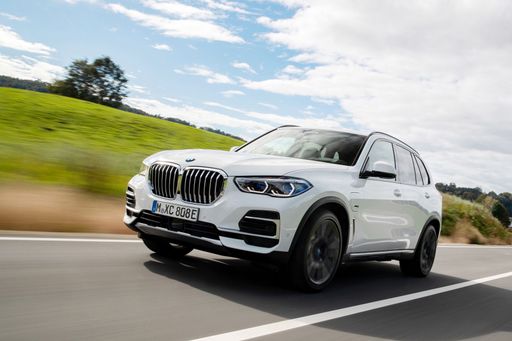
BMW X5
BMW X5
The BMW X5 embodies a perfect blend of luxury and performance, offering a driving experience that is both dynamic and comfortable. Its elegant design is complemented by a spacious, high-quality interior that prioritises driver and passenger comfort. Advanced technology features ensure that the X5 meets the demands of modern drivers, providing both entertainment and safety on the road.
details @ press.bmwgroup.com
@ press.bmwgroup.com
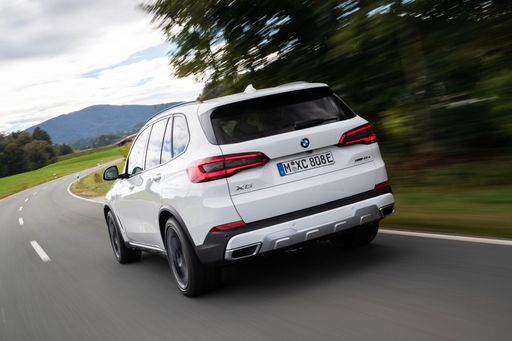 @ press.bmwgroup.com
@ press.bmwgroup.com
 @ press.bmwgroup.com
@ press.bmwgroup.com
 @ press.bmwgroup.com
@ press.bmwgroup.com
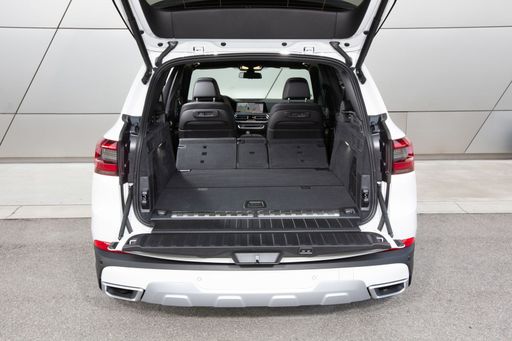 @ press.bmwgroup.com
@ press.bmwgroup.com
Land Rover Range Rover
The Land Rover Range Rover epitomises luxury and capability in the realms of off-road vehicles. Its elegant design seamlessly marries sophistication with ruggedness, making it equally suitable for urban environments and challenging terrains. Inside, passengers are treated to a plush interior with premium materials and cutting-edge technology that ensure a comfortable and connected driving experience.
details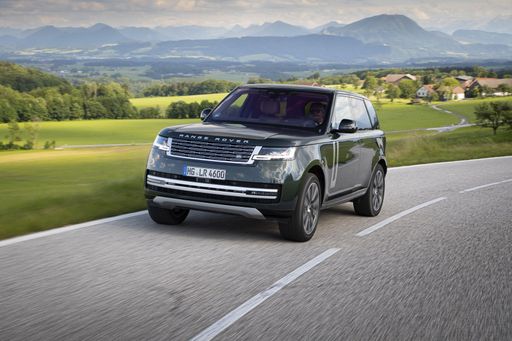 @ media.landrover.com
@ media.landrover.com
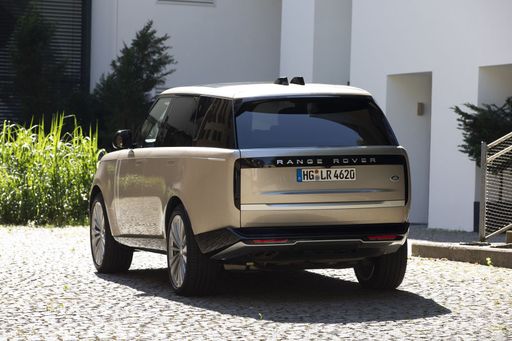 @ media.landrover.com
@ media.landrover.com
 @ media.landrover.com
@ media.landrover.com
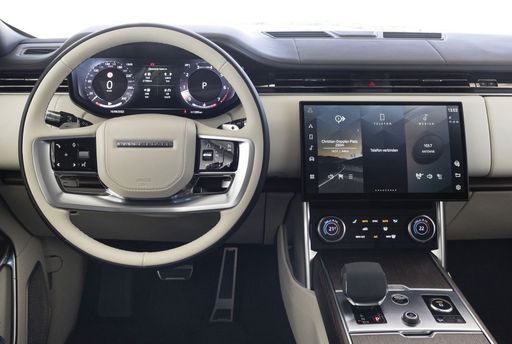 @ media.landrover.com
@ media.landrover.com

|

|
|
|
|
Costs and Consumption |
|
|---|---|
|
Price
77100 - 143500 £
|
Price
122700 - 244700 £
|
|
Consumption L/100km
0.8 - 12.8 L
|
Consumption L/100km
2.7 - 11.7 L
|
|
Consumption kWh/100km
-
|
Consumption kWh/100km
-
|
|
Electric Range
105 km
|
Electric Range
116 - 117 km
|
|
Battery Capacity
25.70 kWh
|
Battery Capacity
31.80 kWh
|
|
co2
19 - 289 g/km
|
co2
62 - 265 g/km
|
|
Fuel tank capacity
69 - 83 L
|
Fuel tank capacity
71 - 90 L
|
Dimensions and Body |
|
|---|---|
|
Body Type
SUV
|
Body Type
Off-Roader
|
|
Seats
5
|
Seats
5 - 7
|
|
Doors
5
|
Doors
5
|
|
Curb weight
2240 - 2495 kg
|
Curb weight
2504 - 2810 kg
|
|
Trunk capacity
500 - 650 L
|
Trunk capacity
212 - 818 L
|
|
Length
4935 - 4948 mm
|
Length
5052 - 5258 mm
|
|
Width
2004 - 2015 mm
|
Width
2047 mm
|
|
Height
1755 - 1765 mm
|
Height
1870 mm
|
|
Max trunk capacity
1720 - 1870 L
|
Max trunk capacity
1841 - 2176 L
|
|
Payload
565 - 705 kg
|
Payload
589 - 846 kg
|
Engine and Performance |
|
|---|---|
|
Engine Type
Plugin Hybrid, Petrol MHEV, Diesel MHEV
|
Engine Type
Plugin Hybrid, Petrol MHEV, Diesel MHEV
|
|
Transmission
Automatic
|
Transmission
Automatic
|
|
Transmission Detail
Automatic Gearbox
|
Transmission Detail
Automatic Gearbox
|
|
Drive Type
All-Wheel Drive
|
Drive Type
All-Wheel Drive
|
|
Power HP
298 - 625 HP
|
Power HP
300 - 615 HP
|
|
Acceleration 0-100km/h
3.9 - 6.1 s
|
Acceleration 0-100km/h
4.5 - 6.6 s
|
|
Max Speed
233 - 250 km/h
|
Max Speed
218 - 261 km/h
|
|
Torque
540 - 750 Nm
|
Torque
650 - 800 Nm
|
|
Number of Cylinders
6 - 8
|
Number of Cylinders
6 - 8
|
|
Power kW
219 - 460 kW
|
Power kW
221 - 452 kW
|
|
Engine capacity
2993 - 4395 cm3
|
Engine capacity
2997 - 4395 cm3
|
General |
|
|---|---|
|
Model Year
2023 - 2025
|
Model Year
2025
|
|
CO2 Efficiency Class
B, G
|
CO2 Efficiency Class
B, G
|
|
Brand
BMW
|
Brand
Land Rover
|
Is the BMW X5 offered with different drivetrains?
The BMW X5 is available as All-Wheel Drive.
The prices and data displayed are estimates based on German list prices and may vary by country. This information is not legally binding.
